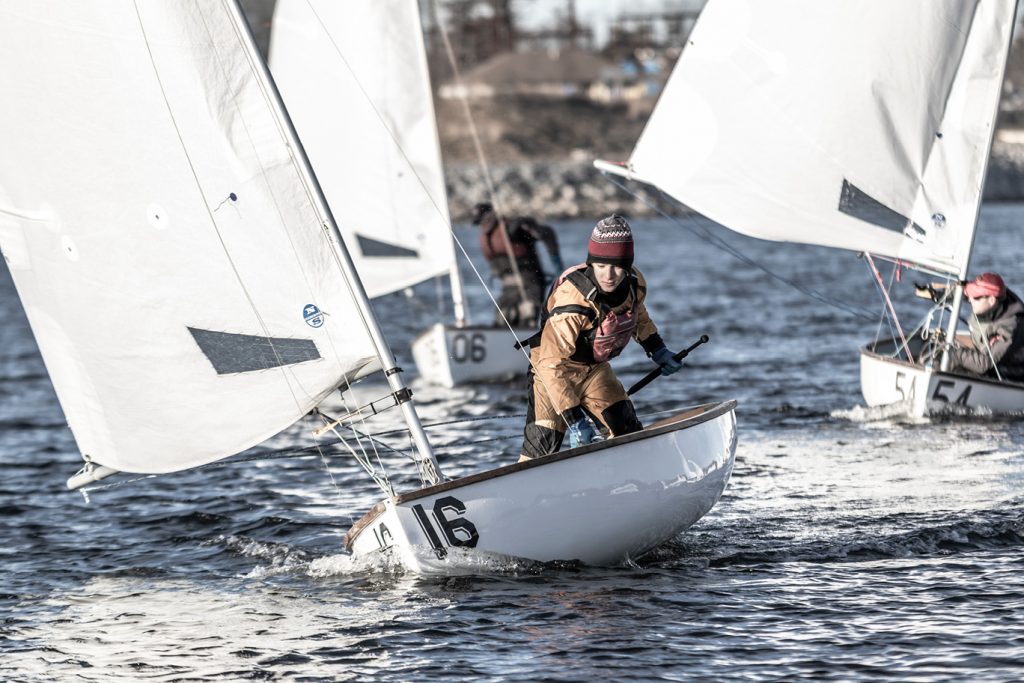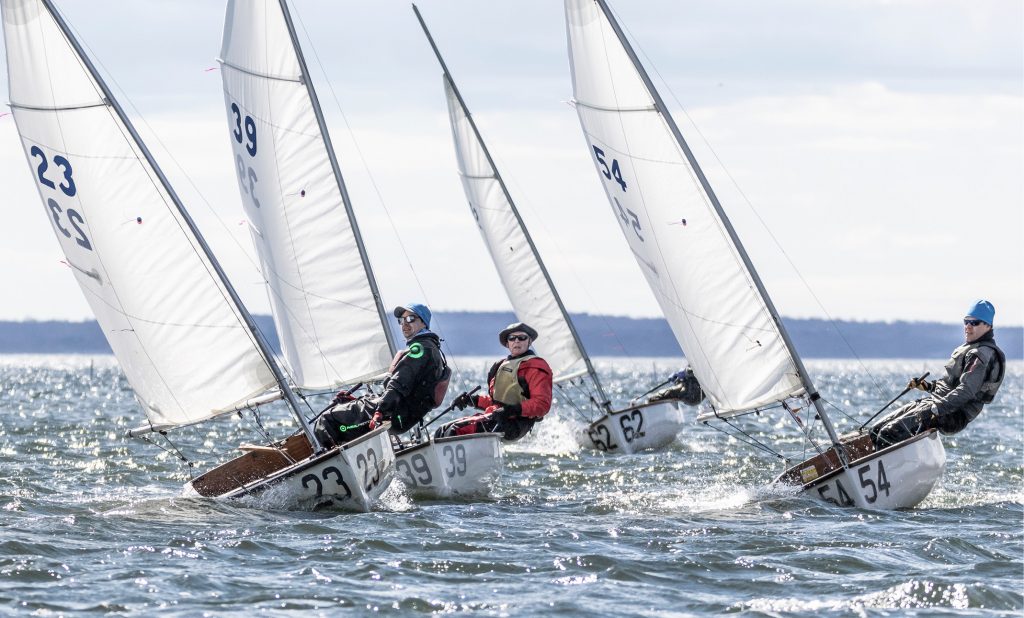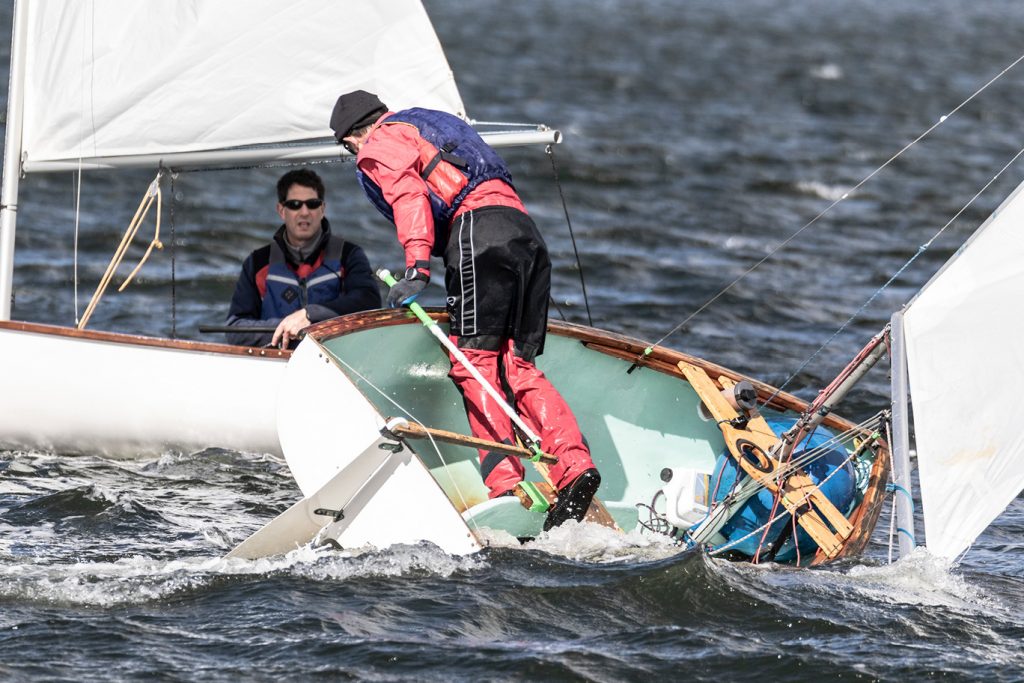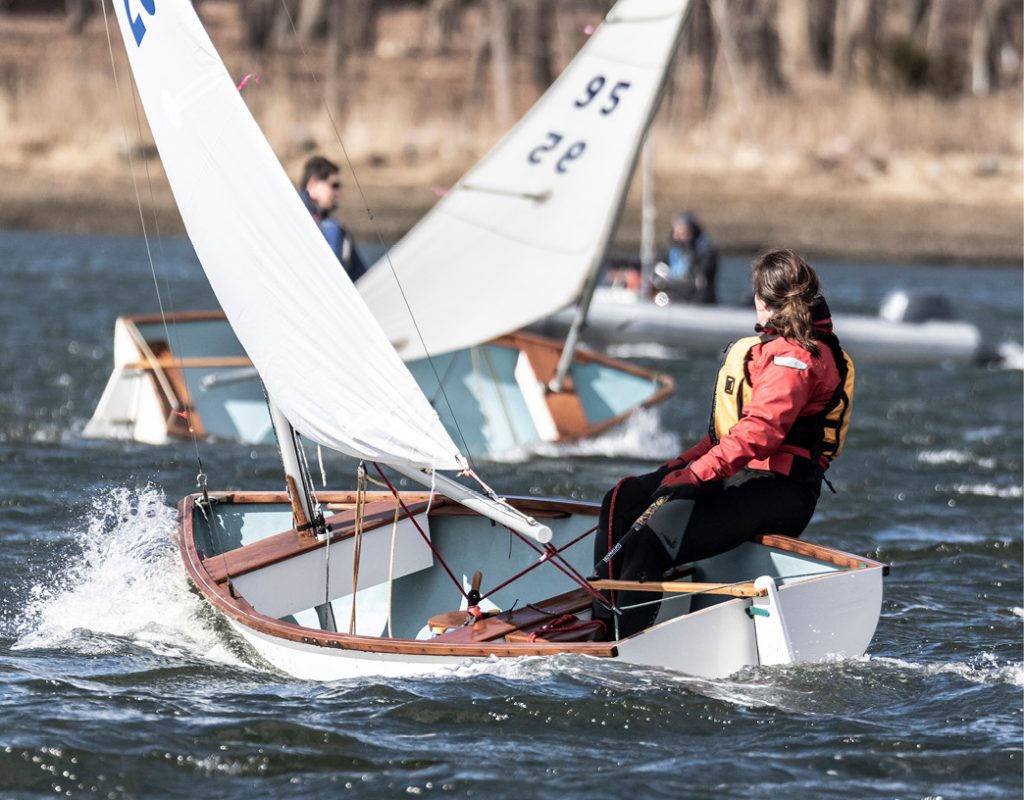By John Bainton
Racing boats in the winter is something I have done since I was probably about eight or nine years old. I started while sailing with my father, Joe Bainton, in Interclubs at Larchmont Yacht Club in Larchmont, NY and Snipes in Annapolis. When I was about fourteen, I got my first Laser Radial and started frostbiting at Cedar Point Yacht Club in Westport, CT. I was frostbiting in Lasers on and off over my adult years, eventually hitting a point where it was downright painful kicking my own butt in an athletic boat while sailing in some less than ideal cold weather conditions. I then ventured into the Cadillac of frostbiting boats, the Ideal 18, at Manhasset Bay Yacht Club in Port Washington, NY while sailing with a friend, Vince Syracuse.

RDDA regattas are a mix of fleet races, team races and match races. © Peter Falkner/peterfalknerphoto.com
Vince and I had a lot of success sailing Ideal 18s without spinnakers in a decent sized fleet of about eight to nine boats and sailing a boat that you do not really ever get wet in while sailing. Meanwhile, a junior sailing friend of mine, Brad Neuberth, who I had competed against in Optimists and International 420s during our earlier sailing years, kept telling me that I needed to check out the frostbiting fleet at Riverside Yacht Club in Greenwich, CT, aka the Riverside Dyer Dinghy Association (RDDA). The RDDA sails the Dyer Dink, a ten-foot sailboat made by The Anchorage in Warren, RI. Unlike the smaller Dyer Dhow, another popular frostbite boat that is nine feet in length and feels like a rowboat with a sail kit, the Dink is a proper small sailboat. The Dink has an extra foot of length over the Dhow, nearly twice the weight, and a larger sail plan.

Sailors in the Riverside Dyer Dinghy Association race the 10-foot Dyer Dink. © Peter Falkner/peterfalknerphoto.com
I was hesitant in joining the fleet since I still owned the Interclub my father and I sailed together, an Ed Adams Edition Vanguard that I had planned to sail with my two boys when they were old enough. After a few years of hearing about how well attended the RDDA races were, I finally took Brad up on an invitation to sail with the fleet. I was amazed by the number of Dyer Dinks on the dock at Riverside YC – roughly 75 boats at the time. I sailed a few Sundays and loved the spirit and size of the fleet.
Because the RDDA fleet sails in the mooring field off Riverside YC, they are subject to dealing with the tide schedule. This means sailing is limited to two hours and the start time alternates each week. So, the Dyer Dink became my frostbite boat of choice for several reasons. I didn’t need to find a crew, and the shorter time commitment works well with being a realtor who works most weekends and allows some time with my family. Most importantly, the RDDA has such a good group of sailors that race regularly and are good at sailing these quirky little boats.

This year’s YRA Frostbite Championship saw gusts to 30 and plenty of swimming. © Peter Falkner/peterfalknerphoto.com
Fast forward two years. I am now a regular attendee of RDDA races, and still amazed at how much fun I’m having in this little boat and this fantastic fleet. We regularly get 35 to 40 boats on the line each Sunday, and we had 62 boats in the Big Fleet Open Regatta. The fleet captains, Andy Taylor and Brad Neuberth, keep the season interesting by mixing in a team race regatta and a match race series. Riverside YC hosted the Yacht Racing Association of Long Island Sound’s 2019 Frostbite Championship in the Dink on a blustery March 16, with 24 entries.

In the words of photographer Peter Falkner, the keenest of the keen get it done in a Dyer! © Peter Falkner/peterfalknerphoto.com
Racing the Dink with the RDDA has become everything I think any competitive sailor would want out of frostbiting. I have recruited my father to sail in the fleet and I can’t wait until my two boys are old enough to get into Dinks and sail against me. I encourage anyone that enjoys getting out to frostbite to join us on the line for some fun in a Dink. ■



